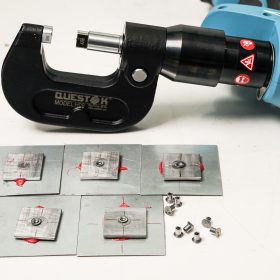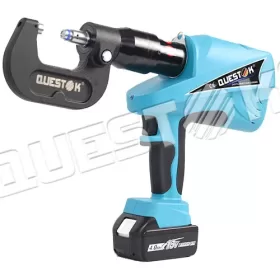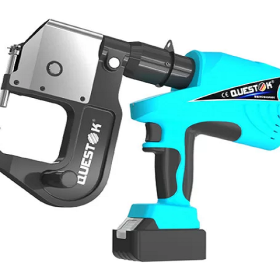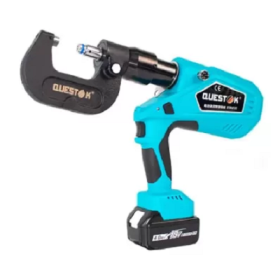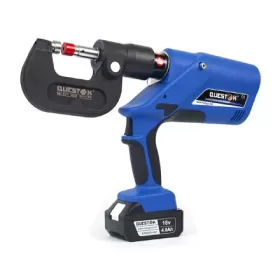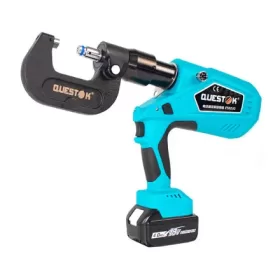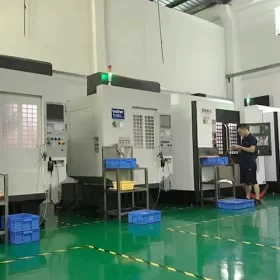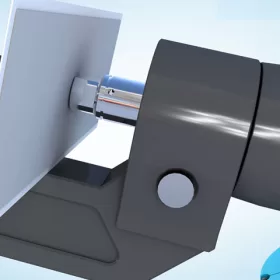Design Considerations for Using Self-Riveting Technology
Introduction
Self-riveting technology, an innovative approach to fastening, has emerged as a viable alternative to traditional riveting methods in various industries. This article delves into the crucial design considerations that must be taken into account when employing self-riveting technology to ensure optimal performance and reliability.
Material Selection
The choice of materials for self-riveting technology requires careful consideration. The materials should be compatible, ensuring a secure bond between the rivet and the substrate. The materials should also exhibit suitable mechanical properties, such as strength, ductility, and hardness, to withstand the stresses and strains applied during the riveting process.
For instance, in the automotive industry, aluminum alloys are often paired with self-riveting technology due to their lightweight and corrosion resistance properties. In contrast, in construction applications, steel or stainless steel rivets are typically used for their high strength and durability.
Rivet Design and Geometry
The design and geometry of the self-riveting technology itself significantly impact its effectiveness. The shape, size, and configuration of the rivet must be optimized to achieve the desired joint strength and integrity. Factors to consider include the rivet’s head style, shank diameter, grip range, and material thickness.
For instance, a flat head rivet may provide a flush finish for aesthetic purposes, while a countersunk head rivet creates a smooth surface, minimizing drag and improving aerodynamic performance. Additionally, the grip range of the rivet should be carefully matched to the thickness of the materials being joined to ensure proper expansion and deformation during the riveting process.
Riveting Process Parameters
The riveting process parameters, including the setting force, setting speed, and dwell time, must be carefully controlled to ensure optimal rivet performance. The setting force determines the amount of force applied to the rivet during installation, affecting the rivet’s expansion and joint strength. The setting speed influences the rate at which the rivet is deformed, while the dwell time allows the rivet to fully expand and establish a secure bond.
Optimizing these process parameters requires careful experimentation and validation to determine the ideal settings for each specific application. For example, in the aerospace industry, advanced riveting systems often incorporate real-time monitoring and control to ensure accurate and repeatable process parameters, resulting in consistent and reliable joint performance.
Joint Design and Assembly
The design of the joint and the assembly process also play a vital role in the performance of self-riveting technology. The hole size, spacing, and edge distance must be carefully planned to prevent premature failure or joint distortion. Additionally, the assembly sequence and the orientation of the rivets should be optimized to minimize stresses and maximize joint strength.
For example, in the electronics industry, printed circuit boards (PCBs) may be assembled with self-riveting technology to create a sturdy and reliable connection between components. By carefully considering the hole pattern and rivet placement, engineers can ensure proper alignment and minimize the risk of solder joint fatigue or component damage.
Conclusion
The successful implementation of self-riveting technology relies heavily on careful consideration of various design aspects, including material selection, rivet design and geometry, riveting process parameters, and joint design and assembly. By comprehensively addressing these considerations, engineers can harness the full potential of this innovative fastening technology, leading to optimal performance and reliability in a wide range of applications.
- Company News
- Industry News
- Tag
- Tags
-
The Advantages of Questok Rivet Guns: Precision, Efficiency, and Durability
In industrial fastening applications, the choice of tools directly impacts productivity, safety, and long-term cost-effectiveness. Questok rivet guns have emerged as a standout solution for professionals across aerospace, automotive, and construction sectors. Combining advanced engineering with user-centric design, these tools deliver unmatched performance. Below are the key advantages that make Questok rivet guns a preferred choice:
-
Rivet Gun FAQ
Rivet Gun FAQ-SPR
-
Fast Assembly and Repair With Cordless Solid Rivet Gun
Questok cordless solid rivet gun stands out as a pivotal innovation, merging portability with power to facilitate efficient and effective fastening in a myriad of applications.
-
Redifine The Role of Self-piercing Riveting Gun Machine
Self-piercing riveting adopts high-speed mechanical fastening skill that joins thin sheet materials, typically steel and aluminum alloys.
-
The Latest Innovations in Clinching Tool Design
Explore the latest innovations in clinching tool design, redefining precision, efficiency, and versatility in material joining.
-
The Application and Maintenance of Self-Piercing Rivet Guns
Delve into the applications of self-piercing rivet guns in the automotive and aerospace industries and reveal the essential maintenance practices that ensure their accuracy and efficiency.
-
Rivetless Riveting Gun for Ventilation Duct Projects
The ventilation duct rivetless gun is a tool for riveting ventilation ducts without rivets.
-
Guide to Using Self-Piercing SPR Riveting Gun
In the automotive industry, self-piercing SPR (Self-Piercing Rivet) riveting guns are commonly used for joining metal components in vehicle bodies, including BMW vehicles.
-
Rivet Gun FAQ
Rivet Gun FAQ-SPR
-
Streamlining Fastening- How an Electric Blind Rivet Gun Enhances Efficiency
Introduction In the realm of manufacturing and assembly, fastening plays a crucial role in securing components and ensuring structural integrity. Traditional manual rivet guns, while reliable, are often time-consuming and labor-intensive. The advent of electric blind rivet guns has revolutionized the fastening process, significantly enhancing efficiency and productivity. This article delves into the benefits of […]
-
User-Friendly Features- Making Riveting Easy with Electric Blind Rivet Guns
Electric blind rivet guns are essential tools for industrial applications, providing a convenient and efficient way to fasten materials together. These tools have significantly advanced, incorporating user-friendly features that enhance their functionality and ease of operation. This article explores several key user-friendly features of electric blind rivet guns, highlighting how they simplify and streamline the […]
-
Unleashing Potential- Unlocking the Versatility of a Handheld Rivet Gun
In the realm of construction and fabrication, precision and efficiency reign supreme. Among the indispensable tools that empower craftsmen and DIY enthusiasts alike, the handheld rivet gun stands as a beacon of versatility and innovation. This unassuming device harbors a hidden potential that belies its compact form, offering a plethora of applications that unlock unbounded […]
-
The Role of Automation in Electric Rivetless Clinching
Electric rivetless clinching (ERC) is a lightweight joining process that eliminates the need for rivets or other fasteners. This can lead to significant cost savings and increased production efficiency. Automation plays a critical role in ERC, enabling high-speed and high-volume production. Automated Feed Systems Automated feed systems are used to accurately position the two workpieces […]
-
Why Choose a Universal Self-Piercing Riveting Gun for Your Projects?
In the realm of construction and fabrication, riveting guns stand as indispensable tools for creating secure and robust connections. Among the various types available, universal self-piercing riveting (SPR) guns have emerged as a game-changer due to their versatility and efficiency. This article will delve into the compelling reasons why choosing a universal self-piercing riveting gun […]
-
Why Choose Stainless Steel Hollow Rivets for Your Projects?
In the world of industrial manufacturing, choosing the right fasteners for your projects is crucial for ensuring longevity and reliability. Among the many options available, stainless steel hollow rivets stand out as a superior choice for a wide range of applications. This article delves into the compelling reasons why stainless steel hollow rivets are the […]
-
Top Trends in Electric Rivetless Clinching Guns
In the realm of fastening technology, electric rivetless clinching guns have emerged as a revolutionary solution for a wide range of industrial applications. These advanced tools offer several преимущества and capabilities, revolutionizing the way businesses approach their fastening needs. Adoption of Brushless Motors Brushless motors have gained significant traction in electric rivetless clinching guns due […]
